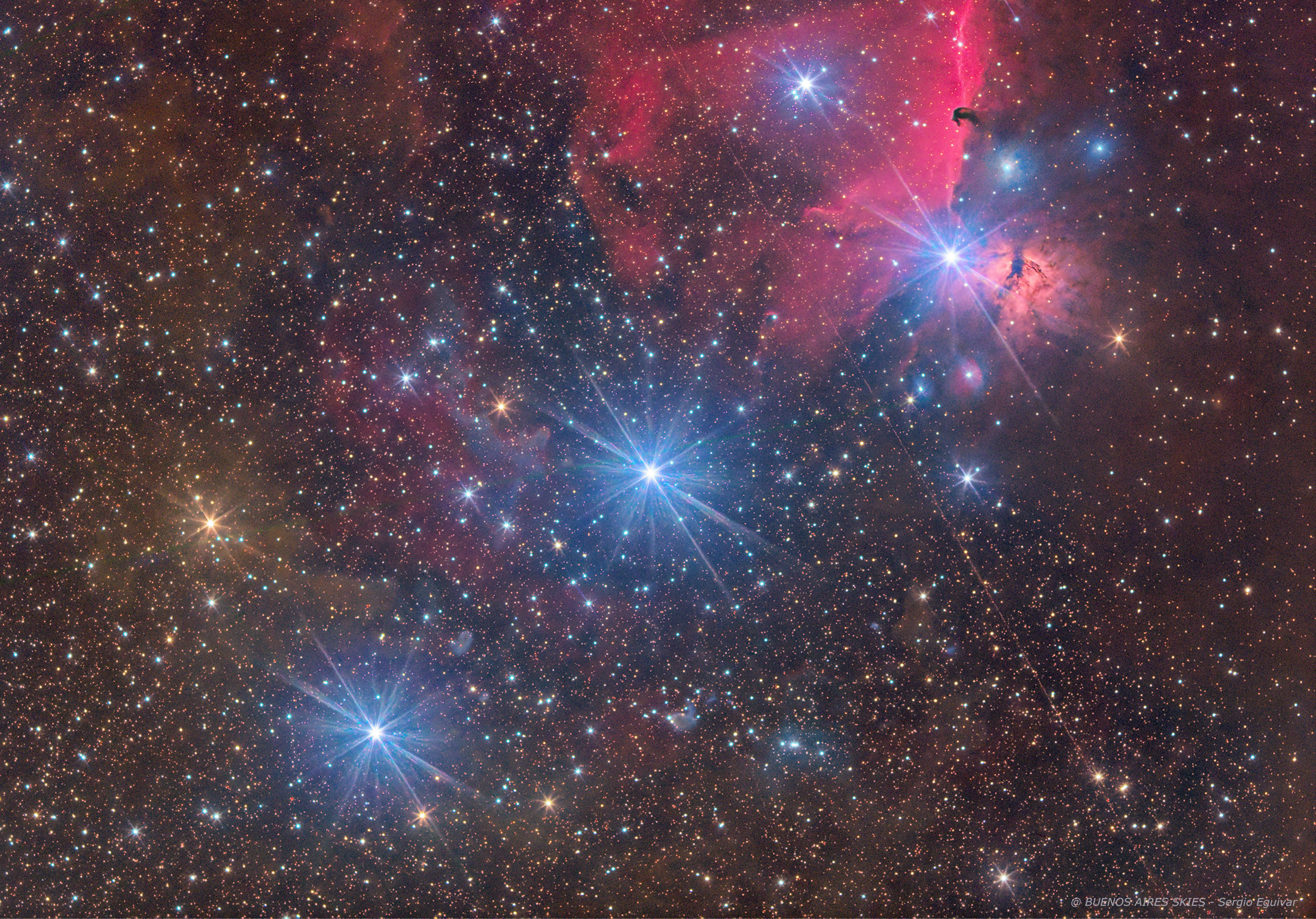
| HOME |
ORION BELT - ALNITAK; ALNILAM & MINTAKA
ASTERISM IN THE ORION (THE HUNTER)
(Image centered at: ra 05h:37 m / dec - 01º 11')

December 2024, Observatorio Cielos Albertnos, Buenos Aires, Argentina
DATA
TYPE: Asterism
APPARENT DIAMETER: FOV 4 x 3 degrees
APPARENT MAGNITUDE (V): from left to right Alnitak 2.14 - 2.26; Alnilam 1.64 - 1.74; Mintaka 1.74
DISTANCE: from left to right Alnitak 916 light years; Alnilam 1340 light years; Mintaka 817 light years
IMAGE INFORMATION
INSTRUMENT: Canon EF 200 mm f2 lens stopped at 4.5
CAMERA: QSI 583 WS
MOUNT: SKYWATCHER NEQ6 guided with ORION 80/400 refractor and Starlight Xpress LodeStar M7 camera
FILTERS: Optolong RGB set Optolong Ha 7 nm
SKY CONDITIONS: Bortle 2-3 skies
OBJECT DESCRIPTION AND IMAGE SESSION
Orion's Belt is an asterism in the constellation of Orion The Hunter. Other names include the Belt of Orion, the Three Kings, the Three Sisters and for Spanish speakers "Las Tres Marias" To the naked eye the three bright stars are nearly equally spaced in a line, spanning an angular size of ~140′ (2.3°). In spite of their spot-like appearance, only Alnilam is a single star; Alnitak is a triple star system, and Mintaka a hextuple. Each of the three owe their luminosity to the presence of one or more blue super giants. The brightest as viewed from Earth is Alnilam, followed by Alnitak and Mintaka. Together, the 10 stars of the three systems has a combined luminosity of nearly one million times (~970,000) that of the Sun's.
Long exposure photography reveals many deep sky gems around the Orion Belt, like the Horse Head Nebula and The Flame Nebula. There is also the presence of some interstellar dust typical ejected from stars containing carbon nitrogen oxygen silicon and iron.
The Orion Belt is presented in the image aligned to the southern observer view.